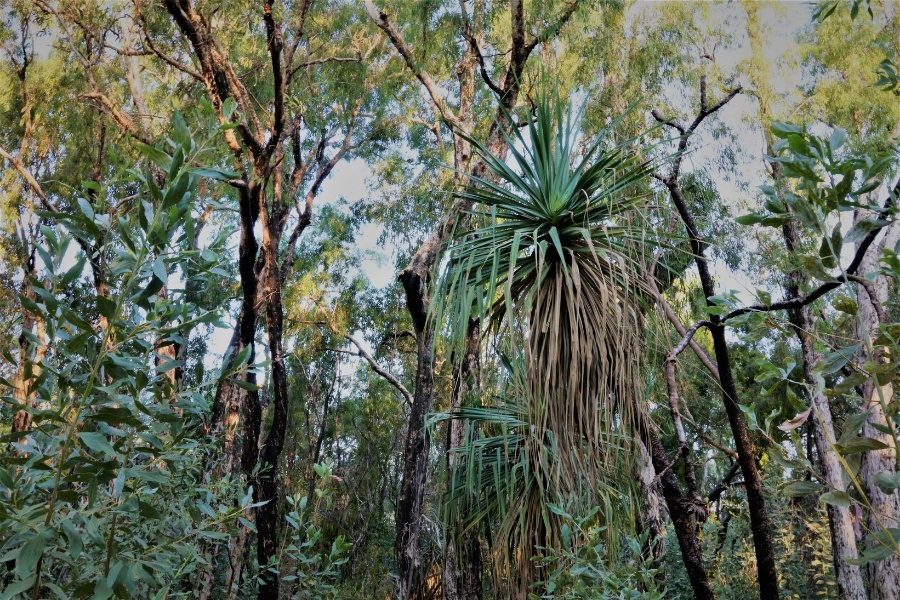News - 01 September 2021
No time to spare for crucial reform of WA’s most valuable natural asset
Native vegetation is WA’s most valuable natural asset and a net gain will require swift and robust policy reform.
Rethink fire management and WA’s prescribed burning regime to protect our biodiversity and carbon assets in important bushlands and forests.
Enhance community rights to facilitate access to accurate and useful information on native vegetation, public participation in decision making and access to environmental justice.

North-east Kimberley rainforest, Miriuwung and Gajerrong Country. Image: Jenita Enevoldsen.
The Wilderness Society welcomes the WA government’s draft native vegetation policy by the Minister for Environment, Amber-Jade Sanderson, highlighting the stark wave of reform required to protect our important forests, bushland and outback across WA.
“Many of the proposed initiatives could make a valuable improvement to the protection and management of native vegetation, which is WA’s most valuable natural asset,” WA Campaigns Manager Patrick Gardner said.
“Drastic improvement is required urgently, as it is well known that we are in the midst of a dual biodiversity and climate crisis.
“Rethinking fire management from a scientific basis is crucial, if we are to protect our biodiversity and carbon stores in important bushlands and forests.
“The impacts on critically endangered Numbat habitat like that at Perup, which was decimated during a prescribed burn in March 2021 is a key reason why we need to rethink this regime.”
The Wilderness Society notes that community sentiment towards the greater need for protection of high conservation values have been heightened in WA recently, as residents have connected with regional and remote parts of the state in record numbers due to COVID-19.
“The community deserves the right to know how much valuable native vegetation has been destroyed - both legally and illegally - and should have the ability to participate in decisions made,” Senior Campaigner, Jenita Enevoldsen reflected.
“Better environmental outcomes would be systemically embedded if the community was able to access justice and hold perpetrators of illegal clearing accountable.
“Rates of native vegetation clearing and continued loss of native forests and exacerbating impacts from climate change have not slowed down, but the community needs access to better information to understand this impact and participate in informed decision making.”
The Wilderness Society produced a report into WA’s native vegetation management system in May 2021*, entitled ‘7 ways to protect WA's most valuable natural asset’.
This report highlighted the absence of reporting on illegal clearing, the need for greater investment in the transparent monitoring, compliance and enforcement efforts.
“Shockingly, cumulative impacts on native vegetation are still not being assessed, with every project being assessed in isolation, which has led to an unsustainable state of decline,” Jenita Enevoldsen said.
“Securing a net-gain of native vegetation across WA is an ambitious goal, which will only work if the offsets regime is reformed.
“Ancient king Jarrah trees, which take hundreds of years to mature to become habitat for fauna, can’t continue to be considered a ‘like-for-like’ with saplings planted for ex-mining rehabilitation purposes.
“Our offset regime needs a rethink, with biodiversity offsets used only in exceptional circumstances and a new model of carbon and biodiversity land restoration adopted, which supports co-benefits with local communities.”
Take a look at the report released by the Wilderness Society, 7 ways to protect WA's most valuable natural asset.
For further comment contact Patrick Gardner (WA Campaigns Manager) on 0423 105 032, or Jenita Enevoldsen (Senior Campaigner) on 0405 941 500.
* Bennett, M. (May 2 2021) Prescribed burn devastates one of WA's last two endangered numbat habitats. ABC News. Last Accessed: 30/8/21